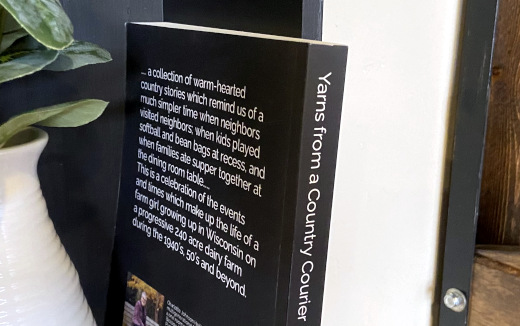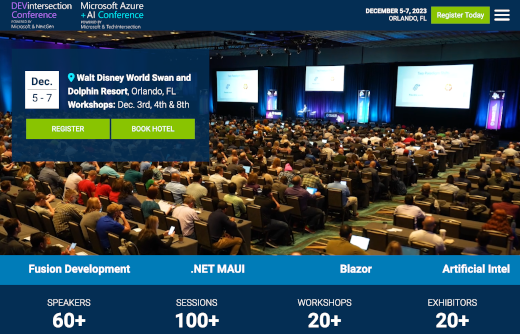My Takeaways From A Christmas Carol
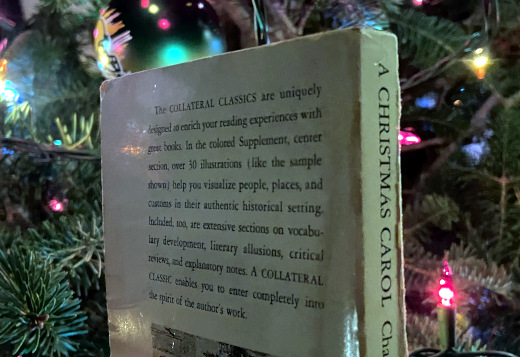
For as long as I can remember I have seen versions of A Christmas Carol performed. The classic Charles Dickens tale of redemption for the holidays has been performed in plays and on TV. Yet for as long as I can remember I have never read the actual text of the story. This is extremely ironic, as I have owned a copy of it since before I could even read! Yes, the picture accompanying this post was given to me as a child, and it has remained with me over the myriad of moves over my life. On a recent work trip I packed it in my carry-on bag to read on the flight.
Would reading the actual, non-adapted words of the author be unique experience from seeing George C. Scott amongst others reciting the words of Ebenezer Scrooge? And would it be possible to have takeaways from such a seminal story? Yes, and yes.
Enjoyed read the original story – It was a pleasure to read the actual words of Charles Dickens now over 180 years from when it was originally published. Where the presentation was classic British English, it was a nice contrast to the adapted and embellished narratives I have watch on big and small screens and live in such venues as the Goodman Theater in Chicago.
Staves not Chapters – Each of what I would traditionally consider a chapter in the book was called a stave. As I am unfamiliar with the term, I had to look it up. I found this great description of what a stave is, as it’s rooted in music, and relates to the title being a carol and thus a song. This is something I never picked up from any performance.
How to get the good out of other – I have always felt that most people have good at their core, and for whatever reason it has been hidden or warped by layers that have cocooned it over the years. In the original words that unraveling of Scrooge’s bitterness happens rather quickly upon encountering the Ghosts. From personal experience, however, people don’t change that rapidly. Then again, how many ghosts have they seen?
My copy of A Christmas Carol was published in 1966 and cost a whopping 50 cents. Illustrations from the period of the 1800’s when the book was written are included in each paragraph, er, stave. In the middle of the book is a “reader’s supplement” which includes additional notes and illustrations to help paint the picture of life in that period.
If you’ve never read A Christmas Carol and you are someone who celebrates the season as a religious or secular holiday, I highly recommend getting a copy of it. Where giving away to others what I read is a tradition here at The Hot Iron, I am going to pull a Scrooge and keep this copy in the home – I have owned it this long, and will pass it along to my family.
This is from The Hot Iron, a journal on business and technology by Mike Maddaloni.
Did you enjoy this? Subscribe to The Hot Iron by RSS/XML feed or Read by Email
Book Take-Aways • (0) Comments • PermalinkMerry Christmas 2023
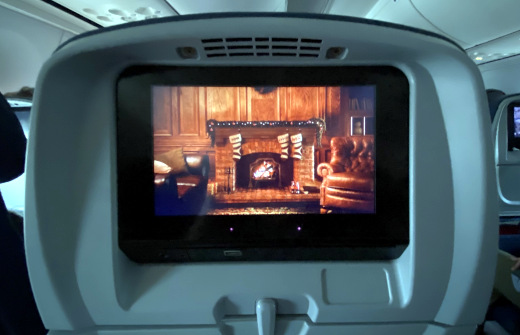
To all those who believe Christ the Savior was born today, Merry Christmas! To those who do not, Happy Monday!
With all of the hustle, bustle and unnecessary anxiety over the holidays, it’s always nice to see a sign that makes you stop in your tracks, pause for a bit and get a positive emotion from it. For myself, one of them (yes, I have been blessed to have had a few) was on the flight back from the Microsoft Azure and AI Conference I attended a few years ago. On the flight down I turned off the seat-back entertainment screen so I could read an actual paper book, but on the way back I decided to peruse the options from Delta Air Lines a bit when what to my wondering eyes did appear.
That was when I had the moment, which I captured in the picture accompanying this post. It’s a yule log video. It brought back memories of watching the yule log burning on WPIX-TV Channel 11 in New York City as a kid. For some reason the cable system in my town in western Massachusetts got the New York City independent TV stations, WPIX being one of them. Every Christmas 11 Alive, the as the station’s tag line was at the time, would air the yule log, ideally to give the Christmas spirit of a roaring fire for people living in apartments in the Big Apple. It was nice for us to watch as our chimney was capped and thus our fireplace wasn’t a working one. Of course I wondered how Santa got into the house, but I digress. It’s nostalgic to watch this video these many years later, especially as when I started watching it, we had a black and white TV. I have linked to the yule log video here and have embedded it below.
From my home to yours, wherever you may be, have a wonderful holiday season!
This is from The Hot Iron, a journal on business and technology by Mike Maddaloni.
Did you enjoy this? Subscribe to The Hot Iron by RSS/XML feed or Read by Email
Announcements • (0) Comments • PermalinkMy Takeaways From Yarns From A Country Courier
“There are eight million stories in the Naked City; this has been one of them.” That famous line is from the movie The Naked City, a story about a murder in New York City. Sure, in a city of that many people there are certainly that many stories if not more. But what about elsewhere? Take a more less-populated area, for example. Of course there are, and the book Yarns From A Country Courier by Charlotte Heikkinen is a collection of stories by this teacher / journalist from her life as she chronicled them in her newspapers columns over the years.
My interest in this book is rooted in the fact I know Charlotte’s sons, both of whom are of course mentioned in her stories. I bought a copy of this self-published tome from the author herself, as she setup a shop at a local community market. As I read through her tales of growing up in the rural Midwest, among the yarns of her life I had several takeaways.
A slice of history – The tales told here are much more than a personal story of one woman, but the story of how life was where she was at that time. These stories need to be told, and each one is a square in the vast quilt of history.
Know your audience – Just before I bought my copy of the book she was talking to the person in front of me who was buying their own copy. She told them the text is in big print to benefit her target audience of an older generation. As I write this post I am nodding my head getting used to my new bifocals, so I appreciate the attention to detail to have larger text on the page for her readers.
More encouragement to write my own – After reading the book I said to myself, as I have said before, “I need to write my own book.” I guess I can say I am making progress towards it one blog post at a time. And for as much as I encourage others to write and publish their own book, I need to start making a more concerted effort on my end.
Yarns From A Country Courier was an enjoyable read, telling the stories of life from the middle of the last century to the present. I especially liked the mentions of her sons, but I digress. For anyone interested in the personal nuances and challenges of rural life at that time, I highly recommend the book. As I pass along all books I read, I am passing it along to the parents of another friend of mine – I have enjoyed engaging in conversations with them over the years and have enjoyed their stories; perhaps after reading this they too may be motivated to write their own book?
This is from The Hot Iron, a journal on business and technology by Mike Maddaloni.
Did you enjoy this? Subscribe to The Hot Iron by RSS/XML feed or Read by Email
Book Take-Aways • (0) Comments • PermalinkHeading to the Microsoft Azure And AI Conference December 5 – 7
Next week, Tuesday through Thursday, December 5 through 7, 2023, I will be attending the Microsoft Azure and AI Conference in Orlando. Will you be there too?
The conference includes a wide array of presenters from Microsoft and partner firms on leveraging the latest capabilities of Microsoft’s cloud hosting platform Azure as well as artificial intelligence, or AI – the hottest topic out there in the tech world and beyond.
I will be attending with colleagues from work who all work with Azure in different capacities. This collaboration among peers will heighten my learning for certain over the 3-day conference. I am hoping to take away from this tangible ideas and potential projects to meet our team and organizational goals.
If you are attending feel free to connect with me here and comment on this blog post or you can connect with me on LinkedIn and please no spammy sales pitches.
This is from The Hot Iron, a journal on business and technology by Mike Maddaloni.
Did you enjoy this? Subscribe to The Hot Iron by RSS/XML feed or Read by Email
Announcements • Strategize • Technology • (0) Comments • PermalinkMy Takeaways From The Song Of Significance
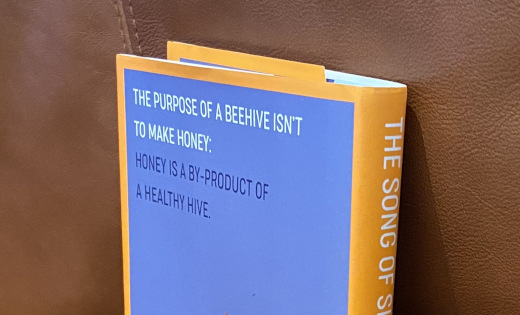
Have you ever gotten to the end of the work day and said to yourself, "self, what was that all about?" Whether you are stepping away from a home work setup or plunking yourself onto the seat of a car, bus or train, many people have feelings like this on a regular basis. And perhaps have had them in some cases for some time.
We know there's a better way. In his latest book - his 21st book overall - business consultant Seth Godin sums up the issue with one word – significance. The Song of Significance is a call (or a plea; choose your action word) for a better, more rewarding way for people to work. It features real cases from business throughout the verses (not chapters) of the book who are fostering a culture of significance. The imagery of the bee on the cover and in the book comes from how a beehive works.
I was lucky enough to get this book through the Marketing Over Coffee podcast, as one of the co-hosts John Wall did a great interview with Godin and he gave John copies of the books to offer to his listeners. Though a quick read, it was packed with thoughts and I got many takeaways from this book.
I generally agree with this – As someone who has worked for companies, as a consultants to them as well as having my own business, I have strong feelings on how teams should work collaboratively and be in concert with a greater vision and mission of an organization.
Limen – It is always my hope that, if anything, I will learn some new words from a book. From verse 61 it is “limen” which is the stone or beam at the top of a threshold or doorway. It is also a point where a stimulus can produce a response, but the secondary one is not the intended definition. Here the reference is about an in-between place.
Think Globally, Act Locally – Being in agreement with having significance in ones work is one thing, making it happen is another. Even if you or I are not in a position to make global change, seek out the ways to make significance in what you do personally. Then expand it from there, to your immediate team, department, division or beyond. This is something I have always strived to do in my own teams, against all odds.
The Song of Significance has an accompanying booklet which is meant to be distributed to teammates. It is a summary of the salient points of the overall book. This is a unique idea that maybe more books should have.
If you’re looking to make change in your team or organization or just looking for some motivation for yourself, I recommend reading The Song of Significance. I will be giving my copy of the book, and some of the booklets, to a colleague who works at my co-working space. He and I talk frequently about work and teams and I know he will appreciate this book.
This is from The Hot Iron, a journal on business and technology by Mike Maddaloni.
Did you enjoy this? Subscribe to The Hot Iron by RSS/XML feed or Read by Email
Book Take-Aways • (0) Comments • Permalink
